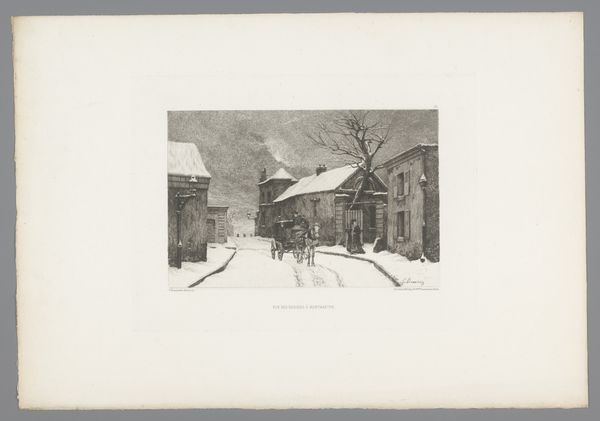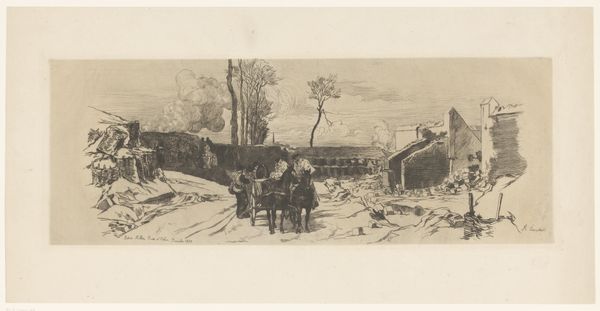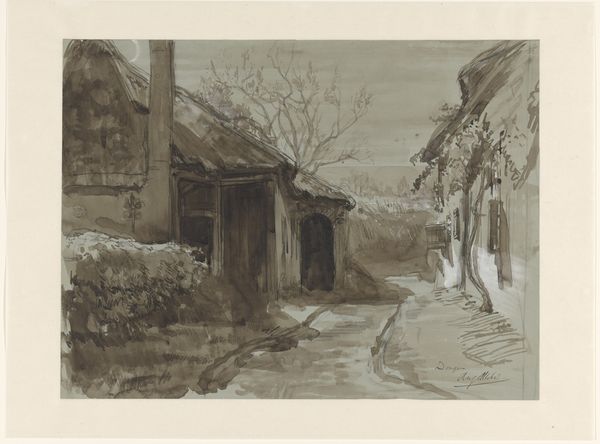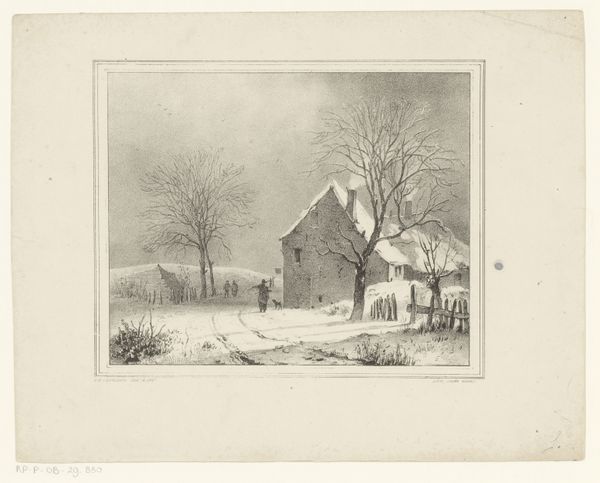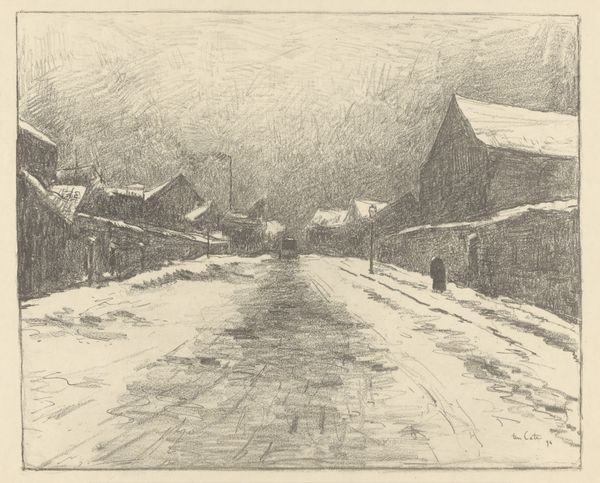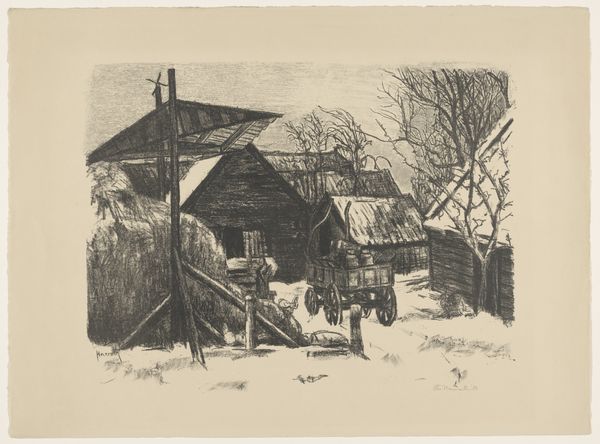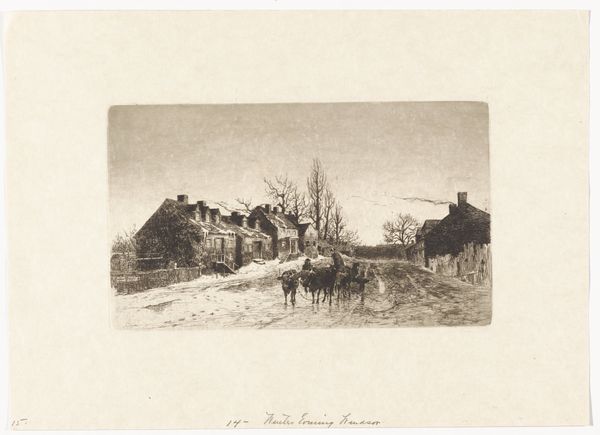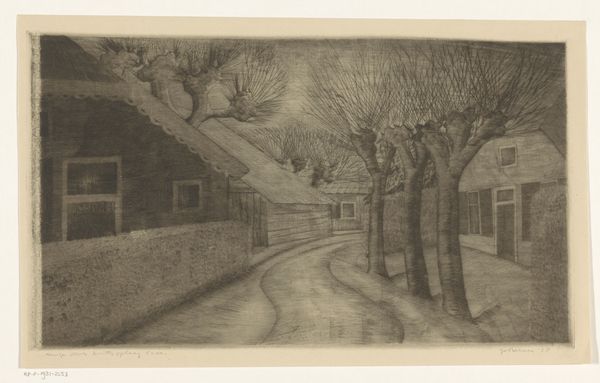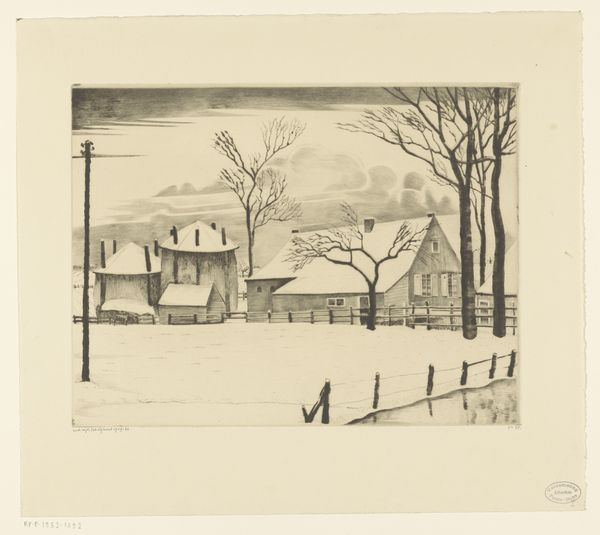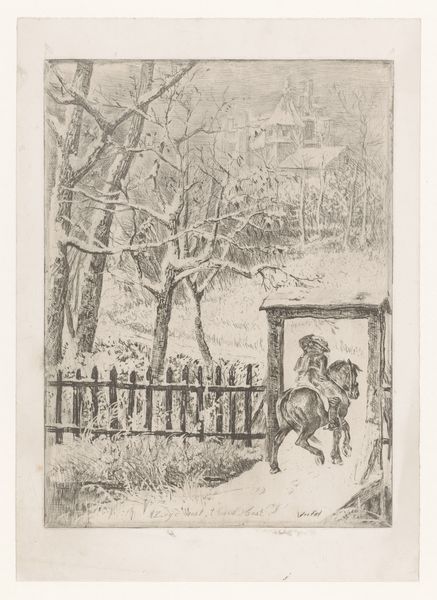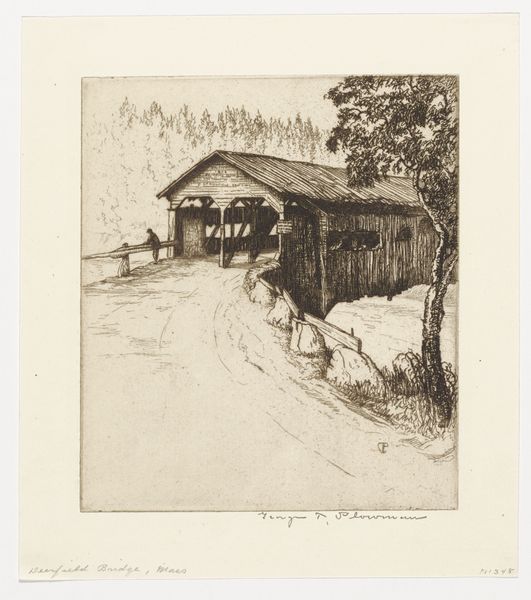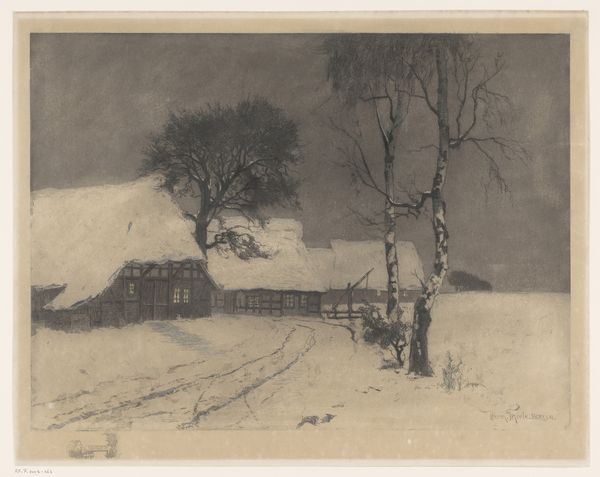
drawing, print, etching, paper
#
drawing
# print
#
etching
#
pencil sketch
#
landscape
#
paper
#
cityscape
#
realism
Dimensions: 166 × 239 mm (image); 200 × 280 mm (plate); 191 × 268 mm (primary support); 224 × 341 mm (secondary support)
Copyright: Public Domain
Editor: We're looking at Charles Joseph Beauverie's etching, "L'Auberge du soleil levant" which translates to "The Inn of the Rising Sun." It's undated, but the print depicts a snowy day in what appears to be a small village, focusing on a quaint inn. The mood is rather somber and isolated. What do you see in this piece? Curator: It’s a powerful image, especially when considering its potential place within the socio-political landscape. Prints like these played a crucial role in shaping public perception of rural life, especially during periods of rapid industrialization. How do you think the depiction of this inn contributes to that perception? Editor: I guess it romanticizes it a bit, emphasizing a simpler, perhaps more authentic, way of life untouched by industrial changes. Curator: Precisely. It touches upon anxieties surrounding urbanization and nostalgia for a perceived pastoral ideal. Notice how the snow almost obscures the background, isolating the inn. This focus wasn't accidental. Galleries often promoted images of the countryside as a contrast to the perceived chaos of urban life, reinforcing particular societal values. Do you notice how the scale is small, modest? What do you think it suggests? Editor: Maybe an escape. A place for a few people away from the large world, but not too distant from the road since a horse cart stands outside? Curator: Interesting. The composition makes me wonder about who consumed this kind of imagery and how they projected their desires onto it. I think they might even have viewed it differently from someone who actually lived there in poverty. It makes you realize how complex the role of such a simple artwork can be. Editor: That’s fascinating! It’s amazing how a seemingly quiet winter scene can tell us so much about broader social and political anxieties of the time. Curator: Exactly. By analyzing how images are presented and circulated, we can understand a great deal about the society that produced and consumed them. This work becomes an important reflection of its time, as a way for elites to define their ideas about nature, culture, and public perception.
Comments
No comments
Be the first to comment and join the conversation on the ultimate creative platform.
